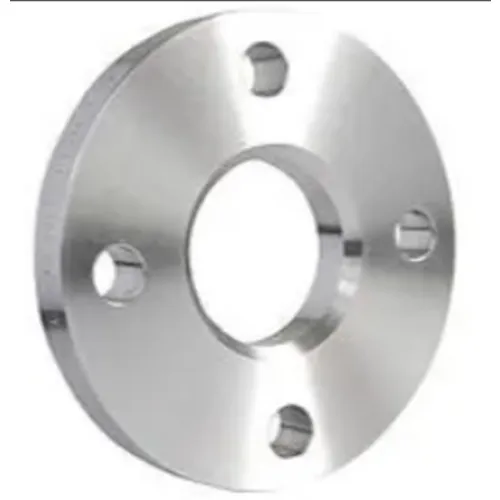-
Cangzhou Yulong Steel Co., Ltd.
-
Phone:
+86 13303177267 -
Email:
admin@ylsteelfittings.com
- English
- Arabic
- Italian
- Spanish
- Portuguese
- German
- kazakh
- Persian
- Greek
- French
- Russian
- Polish
- Thai
- Indonesian
- Vietnamese
- Zulu
- Korean
- Uzbek
- Hindi
- Serbian
- Malay
- Ukrainian
- Gujarati
- Haitian Creole
- hausa
- hawaiian
- Hebrew
- Miao
- Hungarian
- Icelandic
- igbo
- irish
- Japanese
- Javanese
- Kannada
- Khmer
- Rwandese
- Afrikaans
- Albanian
- Amharic
- Armenian
- Azerbaijani
- Basque
- Belarusian
- Bengali
- Bosnian
- Bulgarian
- Catalan
- Cebuano
- China
- China (Taiwan)
- Corsican
- Croatian
- Czech
- Danish
- Esperanto
- Estonian
- Finnish
- Frisian
- Galician
- Georgian
- Kurdish
- Kyrgyz
- Lao
- Latin
- Latvian
- Lithuanian
- Luxembourgish
- Macedonian
- Malgashi
- Malayalam
- Maltese
- Maori
- Marathi
- Mongolian
- Myanmar
- Nepali
- Norwegian
- Norwegian
- Occitan
- Pashto
- Dutch
- Punjabi
- Romanian
- Samoan
- Scottish Gaelic
- Sesotho
- Shona
- Sindhi
- Sinhala
- Slovak
- Slovenian
- Somali
- Sundanese
- Swahili
- Swedish
- Tagalog
- Tajik
- Tamil
- Tatar
- Telugu
- Turkish
- Turkmen
- Urdu
- Uighur
- Welsh
- Bantu
- Yiddish
- Yoruba

دېكابىر . 24, 2024 20:50 Back to list
astm a333 gr6
Understanding ASTM A333 Grade 6 A Critical Material for Low-Temperature Applications
ASTM A333 is a specification that encompasses seamless and welded steel pipe suitable for low-temperature service. Grade 6 of this specification, particularly, is designed for applications where reduced temperatures are a concern. In various industrial sectors, from oil and gas to power generation, materials that can withstand harsh conditions are essential. Understanding the properties, applications, and benefits of ASTM A333 Grade 6 is vital for engineers and procurement professionals.
Chemical Composition and Mechanical Properties
The primary feature that distinguishes ASTM A333 Grade 6 from other steel grades is its chemical composition. This grade typically contains a mix of carbon, manganese, phosphorus, sulfur, and silicon, with the carbon content usually kept below 0.3%. The permissible levels of other elements are also laid out in the specification, allowing for a material that strikes a balance between strength and ductility.
The mechanical properties of ASTM A333 Grade 6 signify its capability in low-temperature environments. With a yield strength minimum of 35 ksi (240 MPa) and a tensile strength of 60 ksi (415 MPa), it provides sufficient strength to withstand external pressures, making it suitable for pipelines and other critical infrastructure.
One of the standout features of Grade 6 is its toughness at low temperatures. When the temperature drops, materials can become brittle, leading to failures. However, ASTM A333 Grade 6 is tested at temperatures down to -50°F (-45.4°C) to ensure that it maintains its impact resistance. This characteristic is crucial for industries that operate in colder climates where the risk of material failure due to brittleness is heightened.
Applications of ASTM A333 Grade 6
The applications of ASTM A333 Grade 6 are widespread, primarily in the energy sector. One of its main uses is in the construction of pipelines for transporting natural gas, oil, and other liquids at low temperatures. The ability of the material to withstand freezing conditions reduces the risk of pipeline failures, which can have catastrophic consequences.
astm a333 gr6

In addition to pipelines, ASTM A333 Grade 6 is also utilized in pressure vessels and heat exchangers, where maintaining structural integrity in low temperatures is paramount. Various power plants also benefit from this material when they employ it in their systems to ensure that energy production continues uninterrupted, even in sub-zero environments.
Moreover, the material finds its way into cryogenic applications, supporting the storage and transportation of liquefied gases such as LNG (liquefied natural gas), which requires special consideration to avoid failures due to chilling effects on conventional materials. The reliability of ASTM A333 Grade 6 contributes significantly to the overall safety and efficiency of these operations.
Advantages of Using ASTM A333 Grade 6
Choosing ASTM A333 Grade 6 offers several advantages. First and foremost, the compliance with rigorous standards set by ASTM ensures that businesses are investing in a material that has been thoroughly tested for performance and safety. Moreover, the special properties of Grade 6 allow for its use in various environments beyond just low temperatures.
Additionally, the global availability of ASTM A333 Grade 6 steel pipes means that procurement and logistics processes can be streamlined. Manufacturers and suppliers are generally familiar with the specifications, which aids in reducing lead times and ensuring quality. This aspect is particularly valuable in projects where time is of the essence, such as in emergency pipeline repairs or quick-turnaround installations.
Lastly, the durability and longevity of ASTM A333 Grade 6 contribute to lower lifecycle costs. While initial costs may be comparable to other materials, the reduced risks of maintenance and replacement yield savings over time, enabling organizations to allocate resources elsewhere.
Conclusion
ASTM A333 Grade 6 is an essential material tailored for low-temperature applications, providing excellent mechanical properties, toughness, and versatility. Its significance in sectors like oil and gas, power generation, and cryogenic technology cannot be overstated. As industries continue to evolve and face new challenges associated with climate and temperature, ASTM A333 Grade 6 will remain a reliable component in the solutions they develop. Whether it's ensuring the safety of transportation infrastructures or enhancing the efficiency of energy production, this grade of steel is poised to sustain its importance in the materials engineering landscape for years to come.
Latest news
-
ANSI 150P SS304 SO FLANGE
NewsFeb.14,2025
-
ASTM A333GR6 STEEL PIPE
NewsJan.20,2025
-
ANSI B16.5 WELDING NECK FLANGE
NewsJan.15,2026
-
ANSI B16.5 SLIP-ON FLANGE
NewsApr.19,2024
-
SABS 1123 FLANGE
NewsJan.15,2025
-
DIN86044 PLATE FLANGE
NewsApr.19,2024
-
DIN2527 BLIND FLANGE
NewsApr.12,2024
-
JIS B2311 Butt-Welding Fittings LR/SR 45°/90° /180°Seamless/Weld
NewsApr.23,2024











